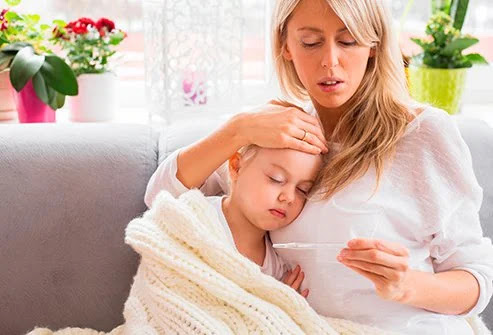Fever Treatment At Home
How do you handle your child’s fever? Do you take them to the doctor right away, or do you try home remedies first? Or maybe you choose something in between.
If your child has a fever, there are several ways of Fever Treatment At Home before you resort to more drastic measures like going to the emergency room or calling your pediatrician for instructions on how to lower your child’s temperature.
Fever Treatment at Home
Although you shouldn’t always trust home remedies, it can be comforting to know there are things you can do at home to help treat fever symptoms.
Certain foods and drinks, such as chicken soup and bananas, have been shown to reduce inflammation; while others—such as ginger and colas—have an active compound that relieves inflammation without increasing heart rate or blood pressure. If you think your child has a fever, be sure to contact your doctor first before trying any treatment at home.
How to Treat a Fever Naturally at Home
An infection, such as a common cold or flu, is one of the most common causes of fever. Most fevers are low-grade and cause symptoms such as mild body aches and headaches. However, sometimes your body's immune system can react abnormally to an infection, causing you to have a high fever with more serious symptoms that require treatment from a doctor.
Certain infections may actually be life-threatening when paired with a high fever. For example, a high fever could make you more susceptible to serious complications if you have HIV/AIDS or other conditions in which your immune system is weak. Fortunately, there are several ways you can treat an unexplained fever at home without antibiotics or other pharmaceutical medications that could upset your stomach or increase antibiotic resistance in people and animals worldwide.
How to Treat Children’s Fevers at Home
There are few things more heartbreaking than a child who is sick. Even if your child’s illness seems minor, it’s still important to take proper care of him or her—especially when it comes to fever treatment at home.
Children and adults react differently to fevers; while most adults can handle a temperature of 101 degrees F (38 C) without too much trouble, anything over 100.4 degrees F (38 C) can be dangerous for babies and children under three years old. Left untreated, fevers in children can put them at risk for seizures, organ damage, and brain swelling. With these tips from doctors on fever treatment at home, you can keep your child healthy without taking any unnecessary risks.
The Best Ways to Manage a Child’s Fever at Home
Fever is a normal, short-term process, which indicates that body cells are fighting infection. A fever occurs when your child’s immune system produces more heat than is needed to maintain his normal body temperature of 98.6 degrees Fahrenheit (37 degrees Celsius). In addition to being uncomfortable, persistent fever can be dangerous for children younger than age 3 and those with compromised immune systems (such as cancer patients or people with HIV).
Take your child’s temperature every four hours at home if he has a fever. Once you know how high his temperature is, you can decide what to do next. Here are some tips on how to keep your child comfortable and safe while his fever runs its course
Adult’s Fever at Fever Treatment At Home
Fever is usually not harmful in adults, and over-the-counter (OTC) fever reducers can be effective in managing low to moderate fever. Aspirin or acetaminophen are good first-line options for OTC anti-fever medication because they have been shown to help reduce fever in adults and are generally well tolerated.
Ibuprofen has also been shown to effectively reduce fevers, but should only be used by those without underlying medical conditions such as heart disease, kidney disease, liver disease, or diabetes. Many experts do not recommend using ibuprofen if a patient is taking blood thinners like warfarin. Calcium and vitamin D supplements may also help reduce a fever.
Conclusion
When your child has a fever, it can be scary and you may worry about what to do. If your doctor is not available and you’re not in an emergency situation, treat fever at home. Treating fever at home can help ease discomfort for your child. When Fever Treatment At Home, stay in touch with your doctor, as you may need prescription medications depending on how high your child’s temperature is.
If you believe that medicine is needed or are unsure of how to handle a fever, contact your doctor. Once symptoms subside, make sure to see that they follow through with their treatment schedule to ensure their recovery doesn’t take longer than necessary due to missed doses of medication.
Suggested Read: https://healthissueblogs.blogspot.com/












I read this article. I think You put a lot of effort to create this article. I appreciate your work.
ReplyDeletePcd Pharma Franchise in India
Pcd Company
Very Nice Information
ReplyDeleteThanks for sharing such an amazing article, Great keep it up.
ReplyDeleteTop 50 Pcd Pharma Companies in India
Medicine Franchise
We know that everyone has busy schedule in their life and may be its not possible to take care of your elders everytime, AmeraHealth is a St Louis Home care specialist in MO. Get more info at our website:- st louis home care
ReplyDeleteHey thегe and Thank you so much for sharing this information. It has very useful. Please keep sharing.If you want more about the best treatment for viral pyrexia treatment Kindly click the link
ReplyDeletebest Viral fever treatment hospital in Coimbatore
Nice
ReplyDelete